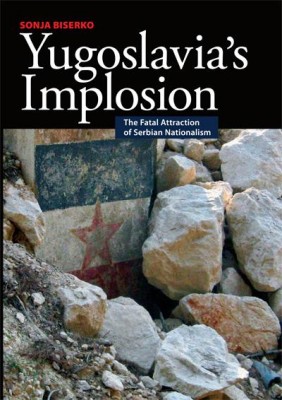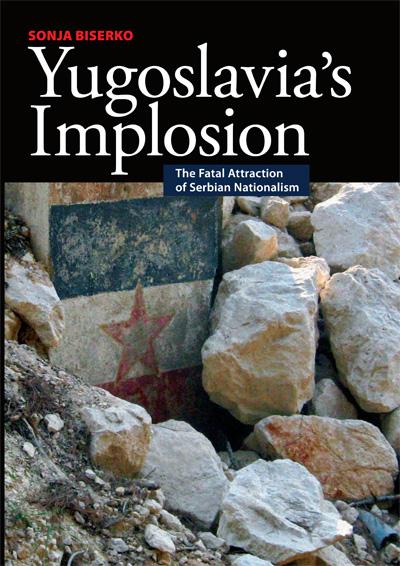 In the 6th century, in the Byzantine capital of Constantinople, the historian Procopius penned an account of the misdeeds of the emperor Justinian and his wife Theodora. The Secret History is a compelling account of the court intrigues of a treacherous emperor in a crumbling empire. That Justinian enjoyed a high reputation, the result of the military victories of his brilliant general Belisarius, vast expenditures on public infrastructure, and the numerous panegyrics of sycophantic followers, only made the Secret History that much more delicious when it was rediscovered and published in 17th-century Italy.
In the 6th century, in the Byzantine capital of Constantinople, the historian Procopius penned an account of the misdeeds of the emperor Justinian and his wife Theodora. The Secret History is a compelling account of the court intrigues of a treacherous emperor in a crumbling empire. That Justinian enjoyed a high reputation, the result of the military victories of his brilliant general Belisarius, vast expenditures on public infrastructure, and the numerous panegyrics of sycophantic followers, only made the Secret History that much more delicious when it was rediscovered and published in 17th-century Italy.
More than a millennium after Justinian, Slobodan Milosevic and his wife Mirjana emerged as the heirs to this Byzantine tradition of secret intrigues, complete with their own crowd of sycophantic followers. Pictures of the dough-faced Milosevic were once ubiquitous in Serbia, right next to Tito on the walls of public places. Pro-democracy activists detested him and his equally power-hungry wife. But Serbia was swept up in a nationalist fervor in the 1990s, sparked and then stoked by Milosevic. The Milosevic duo used this nationalism very deliberately – without necessarily embracing it fully themselves – as they tried to prevent the dissolution of the Yugoslav federation. Like Justinian and his wife, the Milosevics enjoyed a reputation for treachery among adversaries and putative allies alike. Just ask the Bosnian Serbs, who felt that they’d been sold out at Dayton. Milosevic lacked a Serbian Belisarius to execute his plans, having to make do with the considerably less capable Ratko Mladic, and the Milosevics as well as the Yugoslavia they tried to hold together by force eventually exited history.
Numerous accounts of the fall of Yugoslavia have attempted to shine a light on the machinations of the Milosevics. But now, thanks to human rights campaigner Sonja Biserko, we have a Serbian Secret History. Biserko was never a court follower of the Milosevic couple, and she is not interested in the sins of the private life of the elite that so engaged Procopius. But having worked in Yugoslav political structures into the early 1990s, she knows that world from the inside and can dramatically describe the sins of the public life of the Serbian elite. Her new book, The Implosion of Yugoslavia, is a devastating indictment of not only Slobodan Milosevic and his circle of supporters but the entire culture of extreme nationalism that enveloped Serbia in those years like a fever dream.
The “secret history” of Yugoslavia’s implosion is essentially a narrative of covert operations by Milosevic and his supporters to stage-manage, behind the scenes, a Yugoslavia controlled by Serbia. Nationalists viewed this project as the construction of a greater Serbia, with Belgrade extending control over areas with significant Serb populations in Croatia and Bosnia (not to mention direct rule over Kosovo). Milosevic was more interested in state power, however, not so much the millennial aspirations of an ethnic group. But the nationalists were his shock troops, and he used them tactically and to devastating effect.
What makes this history secret, in addition to all the fancy code names that Belgrade bestowed on its covert operations, is its relationship to the conventional narrative. Yugoslavia fell apart, according to this more common account, because of a tug-of-war between secessionist republics (Slovenia, Croatia) and the Machiavellian politics of Milosevic. As Biserko emphasizes, however, this was in some sense a false dichotomy. In her account, Serbia struck first, and the burden of responsibility rests on the shoulders of Milosevic.
Her book, above all, traces the history of an idea and its implementation. As The Implosion of Yugoslavia makes clear, a group of nationalist intellectuals, among them novelist Dobrica Cosic, prepared the ground for what would amount to a coup d’etat against Ivan Stambolic, a communist leader who had once been the mentor to Milosevic. (In a scenario that could have been ripped from the pages of The Secret History, Stambolic would be kidnapped and murdered in 2000, on the orders of Milosevic.) This putsch of the nationalists did not simply effect a change in personnel. It represented a historic shift from communism, which had considerably diminished appeal in Yugoslavia, to nationalism, which as Milosevic understood could more effectively sway public emotions.
His political position more secure after this internal consolidation of power, Milosevic pushed through a new Serbian constitution in 1990 that amounted to de facto secession. A year before Croatia and Slovenia declared independence, Serbia under Milosevic declared itself an independent entity. Article 135, Biserko points out, established Serbia’s right to do whatever it deemed necessary should other republics do anything contrary to Serbian interests.
From that point on, Milosevic eagerly put Article 135 into practice. With Operation RAM, the Yugoslav People’s Army (YPA) tried to prevent Croatia’s independence by ensuring that none of the weapons in the territorial defense units fell into the hands of the emerging Croatian army. When this effort failed to forestall independence, it pursued Operation LABRADOR to cut Croatia in half, with the help of ethnic Serbs bent on creating their own state within a state. If it hadn’t been for the horrors later in Bosnia and the decision made by the United States to intervene on the side of the Croatians, Milosevic might have gotten away with his plan.
The pattern was to be repeated later in the decade with Kosovo. “There was a plan for ethnic cleansing,” Biserko quotes Ratomir Tanic, a Serbian negotiator with the Albanians. “There was above all a plan to reduce the number of Albanians to under a million, and after that it could be claimed that there are less than 50 percent of the them and because of that they do not have the right to autonomy.”
All of these plans remained secret at the time – or at least semi-secret – because Milosevic was positioning himself as the moderate statesman who leashed the crazies, like the paramilitary criminal Arkan at home or the sociopaths Radovan Karadzic and Milan Babic in their ethnic Serbian fiefdoms in Bosnia and Croatia. Milosevic enjoyed the spotlight in Dayton; later he even seemed to relish the spotlight at the Hague tribunal, even as he scrambled to keep secret his own culpability.
Biserko’s focus on Serbia tilts the playing field in The Implosion of Yugoslavia. The secret histories of the other players in the drama receive scant mention, whether Croatian leader Franjo Tudjman’s Operation Storm that expelled a large portion of the Serb population from the country or the covert operations of the Kosovo Liberation Army. A necessary corrective, Biserko’s account still needs to be absorbed alongside works that consider the dissolution of the country from other angles.
After the 2012 elections in Serbia and the return to office of many figures influential in the 1990s, Biserko remains pessimistic about Serbia’s future. Yes, Belgrade complied with the Hague Tribunal by extraditing Ratko Mladic and Radovan Karadzic, the current leadership has given up on any hope of directly controlling Kosovo, and accession to the European Union is no longer a controversial topic in Belgrade.
But many of the myths of Serbian victimhood remain potent. And few Serbian politicians are willing to squarely address responsibility for the wars of the 1990s. “Only the creation of a new intellectual and cultural elite may in turn create conditions for genuine democratic change,” she concludes. It is a sentiment shared by many others throughout the region, for the era of neo-Byzantine intrigue is, alas, still with us.
